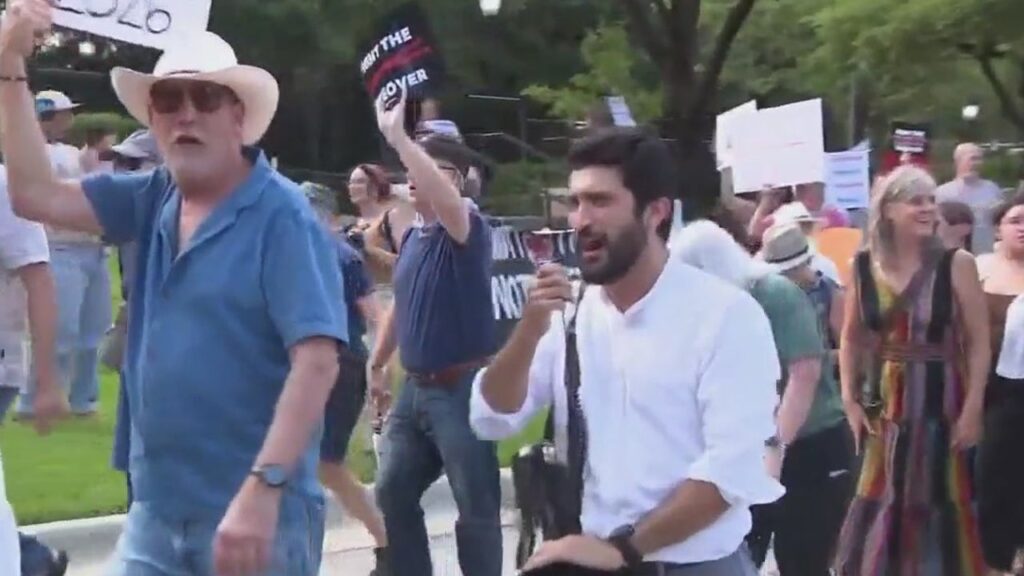
AUSTIN, Texas – The controversial redrawing of congressional district lines in Texas has led to significant unrest among Democrats, resulting in protests and political maneuvering. U.S. Congressman Greg Casar (D-Austin) led a demonstration outside the Governor’s Mansion on March 4, 2024, expressing opposition to the Republican-led redistricting effort. The new map aims to add five Republican seats in Congress, a move that has provoked strong reactions from Texas Democrats, who have fled to other states to disrupt the voting process.
Typically, redistricting occurs every decade, with the last major overhaul implemented in 2021 and intended to last until 2031. This mid-cycle redistricting is particularly contentious, as highlighted by Casar’s remarks during the protest. “I believe in the courage of Texas Democrats who are standing up for voting rights and their constituents,” he stated.
Governor Greg Abbott has taken a firm stance, ordering the arrest of the fleeing Texas House Democrats, claiming they have abandoned their responsibilities. In a statement, Abbott criticized the Democrats, asserting that “our fellow Texans are being let down” due to their absence, and suggested they have forfeited their legislative seats.
In response to the ongoing situation, Abbott set a deadline for lawmakers, warning that failure to return by 15:00 on March 4 could lead to severe consequences, including potential loss of office. The Texas House Democratic Caucus succinctly countered Abbott’s ultimatum with a bold statement: “Come and take it.”
Political analysts have noted that the current situation reflects broader partisan tensions. Brian Smith, a political science professor at St. Edward’s University, remarked, “It’s a great way for Democrats to slow down the process because they know they lack the votes to stop the Republicans.” This redistricting effort, according to Abbott, is justified by changes in law since the last redistricting, including a recent court decision that has made it legal to dismantle coalition districts.
The implications of these changes are significant for the Republican Party, which could gain an additional five seats in Congress if the new map is approved. This tactic of mid-cycle redistricting has been employed in the past, but it raises questions about the fairness and integrity of the electoral process. The potential political motivations behind this initiative are underscored by statements from former President Donald Trump, who has suggested that increasing the GOP majority is a strategic priority.
As the situation unfolds, Abbott has emphasized that the redrawn district lines would also support the creation of more racial minority districts, including solidifying the Barbara Jordan African-American district in Houston and adding four new Hispanic districts. “There are actually going to be more racial minority districts in the state of Texas,” he asserted, framing the redistricting effort as both a political and social necessity.
The ongoing confrontation between Texas Democrats and the Republican-led state government underscores the high stakes involved in the redistricting process, which will undoubtedly shape the political landscape in Texas for years to come. As both sides dig in, the resolution remains uncertain, with legal and electoral ramifications that could impact not only Texas but also national politics.






